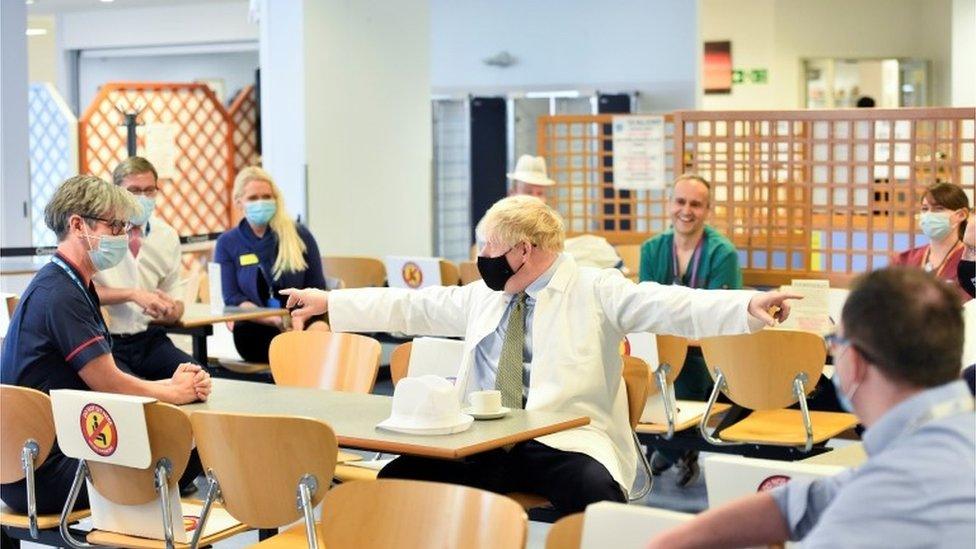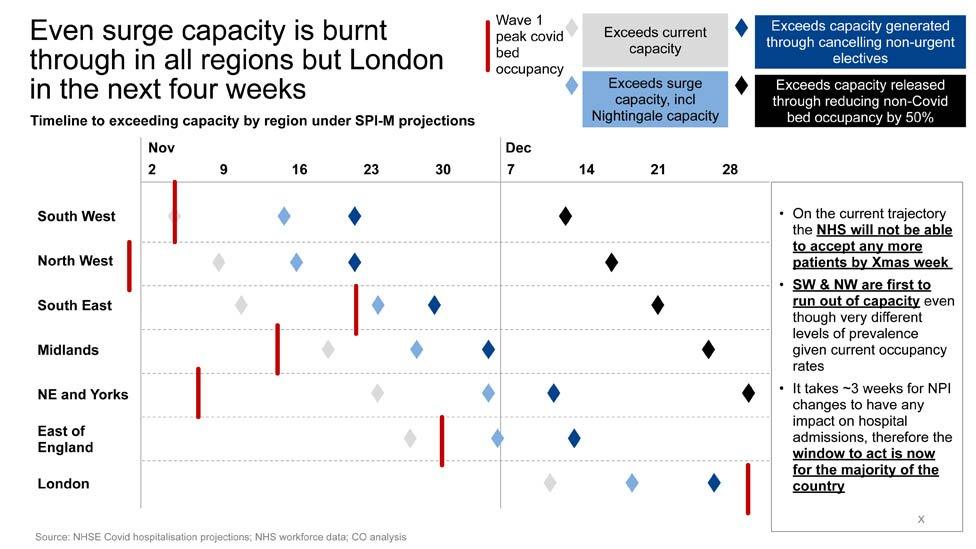Covid-19: The documents pushing Johnson to act
- Published

Not so long ago, the prime minister swore that it was not inevitable. The second wave of the deadly disease would not, and did not, he vowed, have to mean a second moment where our doors would close, high streets fall silent, and the frightened quiet of lockdown return.
But day after day as the numbers of infections have risen, quibbles with local areas on their status continued, the moment has come closer, and now it seems almost sure to return.
Official government documents, seen by the BBC, make the case clear.
The papers suggest that the UK is on course for a significantly higher death toll from coronavirus than during the first wave of the pandemic, unless ministers implement further restrictions.
One of the documents, circulated among members of the government's Sage committee in recent days and discussed by Boris Johnson and Chancellor Rishi Sunak on Friday, says that "all models suggest a significantly higher peak than those estimated at any point in the current Reasonable Worst Case Scenario".
The document, says that "median peak infections are projected to be 50% to 150% greater" than those in the first wave.

One key document shows several UK daily death projections by different modellers, compared with the first wave and the government's "reasonable worst-case scenario" - which was seen in a report in August
So, with the worsening data, the prime minister is now understood to be considering bringing in a new "stay at home" instruction to the country, perhaps as soon as Monday, although the government would still plan for schools, colleges and universities to stay open this time, rather than a total lockdown like in the spring.
Downing Street is understood to be considering a month-long form of lockdown, which would put the brakes on the spread of the disease, while plans for mass testing are accelerated, in the hope that restrictions could be eased before Christmas.
The papers seen by the BBC, understood to be part of a presentation by the government's SPI-M group of scientists, feature several different projections of the likely course of the disease. All models predict a significantly higher number of infections and deaths than during the spring, when deaths reached more than a thousand a day and much higher than the government's current worst case scenario.
One of the models featured in the document suggest that deaths could even reach more than 4,000 a day if no policies are brought in to slow the spread of the disease, although the central expectation is not that high.
All the models in the document predicts that hospitalisations are likely to peak in the middle of December, with deaths continuing to rise until at least late December before falling from early January.
And a separate document circulating in government, based on NHS England modelling from 28 October, warns that the health service would not be able to accept any more patients by Christmas, even if the Nightingale hospitals are used and non-urgent procedures are cancelled. The document warns that south west England and the Midlands will be the first to run out of capacity, potentially within a fortnight.
The document warns "the window to act is now for the majority of the country" and warns that if no action is taken to control the number of Covid infections, other forms of emergency care may have to be rationed.
A government source said that the country is at a "crunch point". No final decisions have yet been taken, and not all cabinet members have yet been consulted on the next steps. But it seems that Mr Johnson is likely to take the national action that he swore he would do everything to avoid.

A Cabinet Office analysis of projections for hospital capacity
